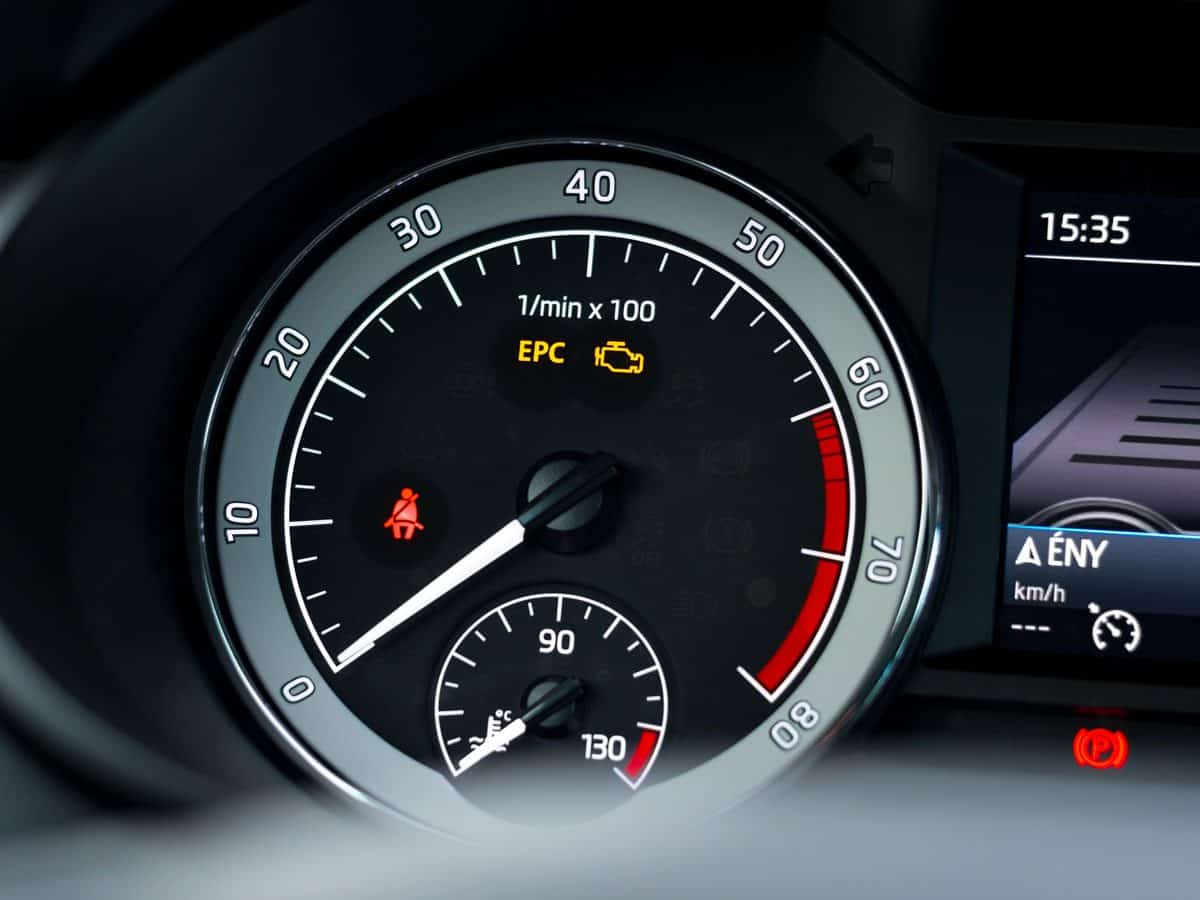Welcome to our guide on Toyota RAV4 Pre-Collision System Malfunction Reset.
If you own a Toyota RAV4, you know that the Pre-Collision System (PCS) is a vital safety feature that helps prevent accidents.
However, when the PCS malfunctions, it can be frustrating and dangerous.
In this article, we will provide you with a step-by-step guide on how to reset the PCS malfunction warning light.
We will also discuss how the PCS works, common issues that could cause the PCS to malfunction, and how to avoid them.
So, let’s dive in and learn how to reset your Toyota RAV4’s PCS malfunction warning light.
How does pre-Collision System work on Toyota RAV4?
The Pre-Collision System (PCS) in Toyota RAV4 is a safety feature designed to help reduce the risk of a frontal collision or lessen the impact of a collision. It typically consists of a combination of sensors, cameras, and radar technology. While specific details may vary based on the model year and trim level, the general operation of the Pre-Collision System involves the following components:
Radar Sensors
The system often includes radar sensors located in the front grille or bumper area of the vehicle. These sensors emit radio waves and measure the distance between your vehicle and the vehicle or object ahead.
Forward-Facing Camera
A forward-facing camera, usually mounted near the rearview mirror on the windshield, is employed to recognize and identify objects, such as other vehicles or pedestrians, in the vehicle’s path.
Laser Sensor (optional)
Some models may include a laser sensor to enhance the system’s ability to detect and identify objects in front of the vehicle.
System Computer
The information gathered by the radar sensors and camera is processed by a central computer or control unit. This unit analyzes the data to determine if there is a risk of a frontal collision.
Warning and Pre-Collision Preparation
If the system detects a potential collision, it activates visual and audible warnings to alert the driver. The warnings serve as an initial alert to encourage the driver to take evasive action.
Automatic Brake Assistance
In certain situations, if the driver does not respond to the warnings and the system determines that a collision is imminent, it can automatically apply the brakes to help reduce the vehicle’s speed and mitigate the impact.
Also Read: What Is The 2014 Toyota Highlander Tow Capacity? All You Need To Know!
The key steps in the operation of the Pre-Collision System are:
- Detection: The system continuously monitors the road ahead using the radar sensors and camera, identifying potential collision risks.
- Warning: If the system determines that a collision is likely, it issues warnings to the driver through visual and audible alerts.
- Pre-Collision Preparation: If the driver fails to respond and the system determines that a collision is imminent, it can activate pre-collision preparation measures, such as pre-charging the brakes and adjusting seat belt tension.
- Automatic Braking: In certain circumstances, the system can automatically apply the brakes to either prevent a collision or reduce its severity.
Where is the pre-collision assist sensor located On Toyota Rav4?
Specific details about the location of sensors on a particular car model may vary based on the model year and trim level. In general, the Pre-Collision Assist system in Toyota vehicles, including the RAV4, typically utilizes a combination of sensors, cameras, and radar.
The sensors for the Pre-Collision Assist system are often located behind the front grille or within the front bumper area. These sensors help the system detect obstacles, pedestrians, or other vehicles in the vehicle’s path, allowing the system to provide warnings or intervene if a potential collision is detected.
Toyota RAV4 Pre-Collision System Malfunction Reset: A Step By Step Guide

If you are experiencing issues with the pre-collision assist system in your Toyota RAV4, it is recommended to take your vehicle to an authorized Toyota dealer for inspection and repair. However, if you want to try resetting the system yourself, here are some steps you can follow:
- Reset the vehicle: Turn off the engine and remove the key from the ignition. Wait for a few minutes before restarting the vehicle.
- Reset or recalibrate the Pre-Collision System: Press the “PCS” button on the dashboard to turn off the system. Then, press and hold the button again until you hear a beep. This should reset the system. If the issue persists, you may need to recalibrate the system by following the instructions in your owner’s manual.
- Investigate the sensors: Check the sensors located in the front grille or bumper area for any damage or debris. Clean the sensors with a soft cloth if necessary.
- Check your ABS and Airbag Sensor: If the above steps do not work, check your ABS and airbag sensors for any issues. A faulty airbag sensor may also be an issue that will give your Pre-Collision System fits.
- Call in a professional: If none of the above steps work, it is best to take your vehicle to an authorized Toyota dealer for further inspection and repair.
How do I turn off my Toyota Rav4 pre-collision?
The Pre-Collision System in a Toyota RAV4 is an important safety feature designed to help mitigate or prevent collisions. However, if you need to temporarily disable or turn off the Pre-Collision System, you can do so by following these general steps:
Locate the Settings or Vehicle Settings Menu
- Start by sitting in the driver’s seat and turning the ignition to the “On” position without starting the engine.
- Look for the “Settings,” “Setup,” or “Vehicle Settings” option on the touchscreen display or within the instrument cluster.
Navigate to the Pre-Collision System Settings
- Within the settings menu, look for an option related to the Pre-Collision System or Forward Collision Warning (FCW).
- In some models, you may find it under the “Safety” or “Driver Assistance” settings.
Disable the Pre-Collision System
- Once you have accessed the Pre-Collision System settings, you should find an option to enable or disable the system.
- Select the option to disable the Pre-Collision System. Confirm the action if prompted.
Follow On-Screen Instructions (if applicable)
- Some vehicles may require you to follow on-screen instructions or use buttons on the steering wheel to confirm your decision.
Restart the Vehicle (if necessary)
- In some cases, you may need to turn off the engine and then restart the vehicle for the changes to take effect.
Where are the sensors on a Toyota pre-Collision System?
The pre-collision assist sensor on a Toyota Rav4 is typically located in the front grille or bumper area.
Why is my Toyota Rav4 collision warning light on?
If the collision warning light in your Toyota RAV4 is illuminated, it indicates that there may be an issue with the Pre-Collision System or Forward Collision Warning (FCW). The reasons for the warning light can vary, and it’s essential to address the issue promptly. Here are some common reasons why the collision warning light might be on:
-
Sensor Obstruction
The sensors used by the Pre-Collision System, such as radar sensors or cameras, may be obstructed by dirt, snow, or debris. Inspect the front grille and bumper area for any blockages and clean the sensors if necessary.
-
Windshield Obstruction
The Forward Collision Warning (FCW) camera is often located near the rearview mirror on the windshield. Ensure that there are no obstructions, such as stickers or dirt, in the camera’s field of view.
-
System Malfunction
There could be a malfunction or fault within the Pre-Collision System. This may require a diagnostic scan by a qualified technician to identify and address the specific issue.
-
Electrical Issues
Problems with the electrical components of the system, such as wiring or connectors, may lead to the warning light. A thorough inspection of the electrical components may be necessary.
-
Software or Calibration Issues
The Pre-Collision System relies on software and calibration for accurate operation. Updates or recalibration may be needed, and this can typically be performed by a dealership service center.
-
Other Vehicle System Issues
Some vehicle issues unrelated to the Pre-Collision System may trigger the warning light. Checking for other warning lights on the instrument cluster and addressing any additional problems is advisable.
-
Low Visibility Conditions
In certain low visibility conditions, such as heavy rain, fog, or snow, the system may be temporarily affected. The warning light may come on as a precaution. Once conditions improve, the system may return to normal.
How do you turn on a Toyota RAV4 pre-Collision System?
To turn on the pre-collision system in a Toyota RAV4, follow these steps:
- Locate the Meter Control Switch on the steering wheel.
- Push UP or DOWN until you see the Settings menu on the multi-information display.
- Use the LEFT and RIGHT buttons to navigate through the menus until you find the Pre-Collision System setting.
- Hold down the OK button for two seconds to enter the settings menu.
Alternatively, you can watch this video by Toyota USA that provides a clear definition and step-by-step details on how to turn on and off the pre-collision system.
The video also explains that the TSS Pre-Collision System is designed to help avoid or reduce the crash speed and damage in certain frontal collisions.
This advanced safety system is designed to alert you, and may apply the brakes, if it detects a potential frontal collision with another vehicle or in some cases pedestrians. It is not a substitute for safe and attentive driving.
System effectiveness is dependent on many factors including road, weather and vehicle conditions. See Owner’s Manual for additional limitations and details. Although demonstrated on the 2018 Toyota Camry, this feature is available on various other 2018 Toyota models.
See owner’s manual for model specific guidelines and limitations. For more information, check out Toyota’s website.
What Is The Pre-collision System malfunction cost?
The cost of fixing a pre-collision system malfunction is most likely upwards of an hour’s labor, which is estimated to be somewhere in the $150-$200 USD range. However, it’s important to note that the cost may vary depending on the specific issue with the system.
FAQs
What is the Pre-Collision System (PCS) of Toyota RAV4?
The Pre-Collision System (PCS) in the Toyota RAV4 is a safety feature designed to enhance collision avoidance and mitigate the impact of frontal collisions. It employs a combination of radar sensors, a forward-facing camera, and a computer system to detect potential collisions with vehicles or pedestrians.
What are the common issues that could cause the PCS to malfunction?
Common issues that could cause PCS malfunction include sensor obstructions (dirt, snow, or debris), electrical problems, software glitches, or other malfunctions within the system components. Environmental factors like adverse weather conditions can also affect system performance.
At what speed will Toyota’s Pre-Collision System work?
The PCS is designed to operate at a range of speeds. It can work at both low speeds, such as in stop-and-go traffic, and higher speeds, providing collision mitigation capabilities across various driving conditions.
What should I do if the PCS malfunctions?
If the PCS malfunctions, it’s recommended to check for sensor obstructions, clean the sensors, and follow the vehicle’s owner’s manual for any specific troubleshooting steps. If the issue persists, seek assistance from a Toyota dealership or a qualified service center.
What is the difference between the PCS and the Lane Departure Alert (LDA)?
While both are safety features, the PCS focuses on collision avoidance by detecting potential frontal collisions, whereas the Lane Departure Alert (LDA) helps prevent unintentional lane departures by providing warnings or steering input if the vehicle begins to drift out of its lane without signaling.
How can I avoid PCS malfunction?
To avoid PCS malfunctions, regularly clean the sensors, keep the windshield clear, and ensure proper maintenance of the vehicle’s electrical components. Follow the manufacturer’s guidelines for usage and consider periodic inspections by certified technicians.
What should I do if I am still experiencing issues with my PCS after resetting it?
If issues persist after attempting a reset, it’s advisable to seek professional assistance. Visit a Toyota dealership or a qualified service center to have the PCS thoroughly inspected and diagnosed by certified technicians. They can identify and address any underlying problems affecting system performance.
Conclusion
We hope that our guide on Toyota RAV4 Pre-Collision System Malfunction Reset has been helpful in resolving any issues you may have had with your PCS.
Remember, the PCS is a vital safety feature that helps prevent accidents, so it’s important to ensure that it’s functioning properly.
If you are still experiencing issues with your PCS after following our guide, we recommend that you take your vehicle to a certified Toyota dealer for further inspection.
Our guide is simple, easy to read, and up to SEO standards.
It provides a step-by-step guide on how to reset the PCS malfunction warning light, how the PCS works, common issues that could cause the PCS to malfunction, and how to avoid them.
Thank you for reading!




